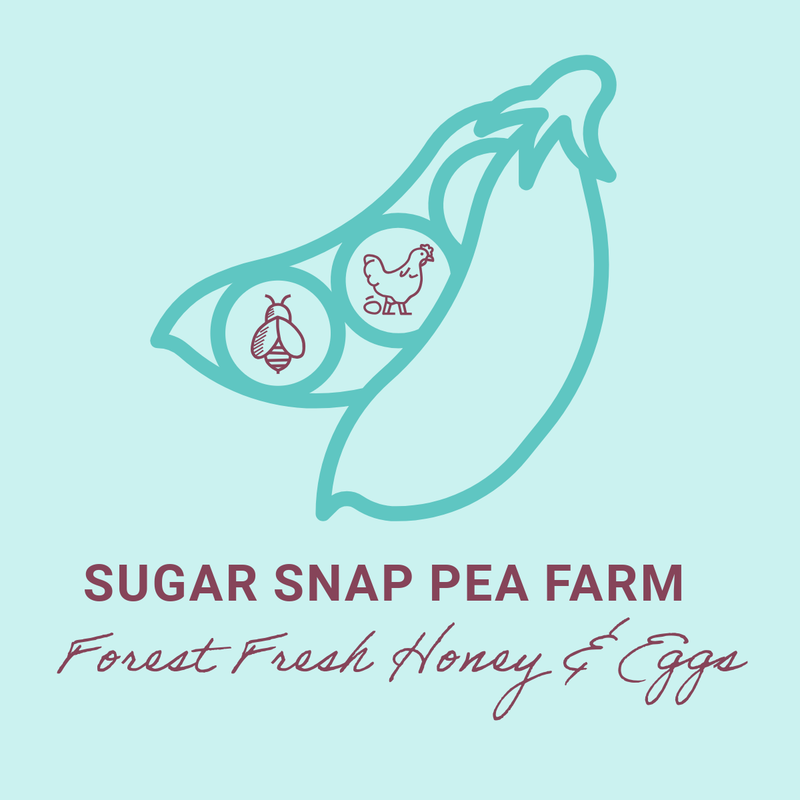Maryland Native Pollinators
As naturalists, we at Sugar Snap Pea Farm believe in natural farming practices that support and nurture our local ecosystem. Native pollinators play a crucial role in this system, helping to pollinate our native plants and maintain biodiversity.
Maryland is home to over 400 species of native bees, along with various wasps and other pollinators. These fascinating creatures are essential for the health of our forest and the surrounding natural areas.
Below you'll find information about some of the key pollinators you might see around Maryland. Each card provides details about the pollinator's identifying features, ecological importance, habitat, and the flowers they pollinate. Use this guide to help identify these beneficial insects on your expedition into the natural world!
Click the scientific name for more pictures and information about each pollinator.
Each card has an 8x11 PDF that can be downloaded via the button on the card.
Eastern Carpenter Bee
Xylocopa virginicaIdentification
Flowers Pollinated
Tomatoes

Ecological Importance
Habitat
Rusty-patched Bumble Bee
Bombus affinisIdentification

Flowers Pollinated
New Jersey tea

Ecological Importance
Habitat
Eastern Yellowjacket
Vespula maculifronsIdentification

Flowers Pollinated
Goldenrod
%3Amax_bytes(150000)%3Astrip_icc()%2Fgoldenrod-wildflowers-2132951-06-ac848e5f75204d4daf11efd3044d911e.jpg&f=1&nofb=1&ipt=3591e68965ccb4c3cd9084be099d14ae91bb942fd01210e0eedd3af861a99934)
Ecological Importance
Habitat
Southern Yellowjacket
Vespula squamosaIdentification

Flowers Pollinated
Late wildflowers

Ecological Importance
Habitat
Bald-Faced Hornet
Dolichovespula maculataIdentification

Flowers Pollinated
Goldenrod
%3Amax_bytes(150000)%3Astrip_icc()%2Fgoldenrod-wildflowers-2132951-06-ac848e5f75204d4daf11efd3044d911e.jpg&f=1&nofb=1&ipt=3591e68965ccb4c3cd9084be099d14ae91bb942fd01210e0eedd3af861a99934)
Ecological Importance
Habitat
Sweat Bee
Family HalictidaeIdentification

Flowers Pollinated
Native wildflowers

Ecological Importance
Habitat
Squash Bee
Subgenus PeponapisIdentification

Flowers Pollinated
Pumpkins

Ecological Importance
Habitat
Mining Bee
Genus AndrenaIdentification

Flowers Pollinated
Spring beauty

Ecological Importance
Habitat
Mason Bee
Genus OsmiaIdentification

Flowers Pollinated
Fruit trees

Ecological Importance
Habitat
Cuckoo Bumble Bees
Subgenus PsithyrusIdentification
%2520sylvestris)_2.jpg&f=1&nofb=1&ipt=257fb1cb933e86d697dcdbdd43734d4aa62d8cca10e060f9742cb279a2d9eac0)
Flowers Pollinated
Bumble bee nest
%3Amax_bytes(150000)%3Astrip_icc()%2FGettyImages-916563540-891eb629a7e445b3b0ea559e529c47b5.jpg&f=1&nofb=1&ipt=ca5ed6430e8f00543c0d5fb55c0bb466ef7463663a6ab33390576490c27870b6)
Ecological Importance
Habitat
Honey Bee
Apis mellifera (Non-native)Identification

Flowers Pollinated
Clover

Ecological Importance
Habitat
Want to learn more about supporting pollinators on your property?
Do you have a swarm you need help with?
